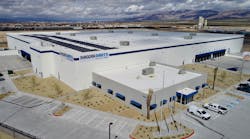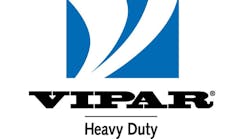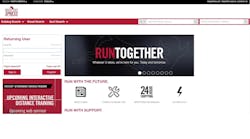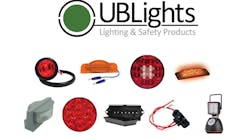AFTER an extensive study of the commercial vehicle aftermarket, Frost & Sullivan industry analyst Kumar Saha identified some key trends:
- Economic uncertainty will continue raising the average age of vehicles.
- There will be growing consolidation in the independent aftermarket, rising importance and prevalence of the OES channel, and a strengthening regulatory environment.
- Fuel-efficiency, emission-reduction, and soft technologies (safety, telematics, etc) will drive growth opportunities.
- Fleet budget restraints, the growing complexity of components, and repair work will lead to a polarization in maintenance practices.
“If there's one thing that will separate the winners from the also-rans in this market, it will be technical preparedness,” Saha said. “The fact that advanced technologies will drive the future of the trucking industry may sound like a cliché, but technical-knowledge management, or lack thereof, remains the 1000-pound elephant in the room. So I have three words for you: Feed the elephant.”
In “Revenue Streams in a Hyper-Competitive Market,” Saha said that without a steady increase in trucks on the road, there won't be much of a market to fight over.
And he said that the good news is that there were 6.4 million Class 4-8 trucks in operation in 2010 — with Class 7-8 trucks accounting for two-thirds of the truck population — and growth is projected to be fairly consistent, with total trucks estimated at 7.1 million by 2017.
The rising average age of vehicles is an opportunity for service, but low vehicle growth limits the aftermarket potential.
Market drivers through 2017: improving OE parts quality means they last longer, resulting in a lower replacement rate; the surge in verticalization of OE components will have an overall restraining impact on the aftermarket by hurting competition; advanced technologies are driving up operating costs for repair facilities; value-priced replacement parts from Asian manufacturers are driving down the market, lowering the barrier for entry and eating into profit margins of North American manufacturers; a rise in component complexity; stringent emissions, idling, and safety regulations; growing freight tonnage; rising average age of commercial vehicles due to delayed purchasing trends; and an increase in new truck sales in 2010-2011.
He said component revenues in 2010 were $14.75 billion and are estimated to be $21.1 billion in 2017.
“What will drive this growth?” he said. “Components such as tires, brakes, and chassis systems will deliver stable revenue streams because of tightening safety regulations and fleet concerns over vehicle downtime caused by crashes or safety violations.”
Looking at the competitive landscape, channel winners will leverage proprietary parts, diagnostic, technician, and repair capabilities.
“Consolidation of distributors and shops will level the playing field for HD specialists,” he said. “Automotive distributors will gain share through increased HD expertise and customer service expertise.
“Independents still hold about 60% of the market. However, the overall independent-channel forecast is to lose market share, primarily because of the inherent weakness of smaller market players.”
Competition to increase
He said the commercial vehicle aftermarket gained 2% in outsourced services between 2008 and 2010 and is likely to gain about 5% more by 2017. An increase in service contracting will heighten the competition between OES and independent channels.
“The number of smaller truck fleets is forecast to increase at a faster pace than large truck fleets,” he said. “These fleets do not have on-site repair facilities, thus driving more business to OE and independent participants. Long-haul fleets are expected to do more of their maintenance in-house. Conversely, urban fleets will drive heavily to outsource their maintenance programs.
“Class 4-8 truck repair and maintenance channels are finding it increasingly harder to attract skilled technicians because of the complex and dirty nature of the work. Dealerships are expected to grow their skilled technician numbers in the short and medium term because of their ability to offer higher wages and training. The rising complexity of components and adoption of advanced technologies puts technician knowledge management issues at the center stage.
“Despite the slight economic recovery, fewer shops are providing the level of training that they historically provided. In 2010, 55% of independents offered formal training services versus 87% of dealerships. Rising OES market share creating greater pressures on independent repair facilities to upgrade their knowledge and skills. Technician training is emerging as a new and potentially rewarding revenue stream for the service and maintenance industry.”
Saha said growing adoption of advanced technologies in telematics, advanced safety, and powertrains will have a long-term impact on aftermarket.
“CSA 2010 and braking-distance regulations will drive the demand for air-disc brakes and larger drum brakes, while impending active and passive tire pressure monitoring Systems (TPMS) and Hours of Service will drive the adoption of EOBR (Electronic On-Board Recorders), and although ESC (Electronic Stability Control) regulations may come into effect beyond 2013, its impact on the aftermarket will be negligible since these systems generally last for the entire lifecycle of a vehicle.
“The big giant dollar sign belongs to aftertreatmemt. The market is expected to grow from $530 million in 2010 to $2.9 billion in 2017.”
He said prognostics and diagnostics “continue to be the darkhorse of the trucking industry.”
“Ignore them at your own peril,” he said. “Prognostics is a major revenue growth opportunity to all corners of the truck industry. For OES, it will allow dealers to address potential defects more quickly, giving greater customer satisfaction, and also stay connected with customers throughout the lifecycle of the truck and reduce warranty cost on certain parts or negotiate with the supplier of that system. For independents, it reduces inventory costs and helps proactive warehouse distributors and HD specialists increase their service business. For fleet owners, it reduces downtime and gives peace of mind.”
How to ensure that revenue streams continue flowing at a steady pace? Saha had strategic recommendations for aftermarket participants:
- Manufacturers
Differentiate between premium and value lines to target diverse vocational needs and develop synergies with larger independent participants to explore private label opportunities.
- HD specialists
Invest in advanced diagnostic capabilities, capitalize on knowledge of safety and chassis components, and develop a long-term strategy for aftertreatment components.
- Smaller independent operators
Align business operations with HD specialists or parts networks, and target smaller fleets for service contracts.
- OE channel
Leverage knowledge of proprietary and advanced technologies, offer competitive menu pricing, and reduce turnaround time.
- Auto warehouse distributors
Leverage automotive customer service and program groups, and attract technicians from existing automotive pools and retrain them for HD maintenance.
- Truck stops
Focus on safety-related unscheduled repair categories as well as tire-repair opportunities and grow infrastructure for DEF replenishment.








